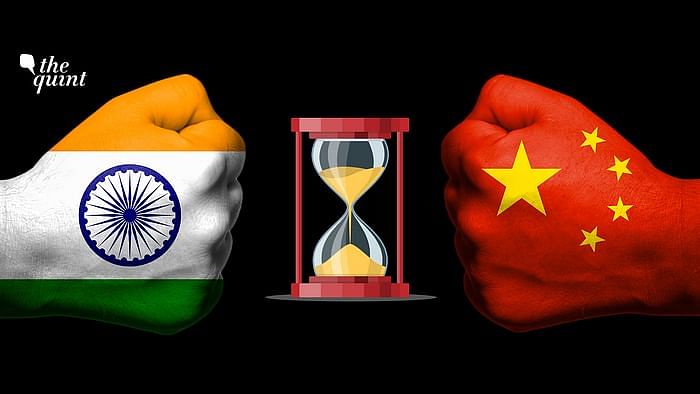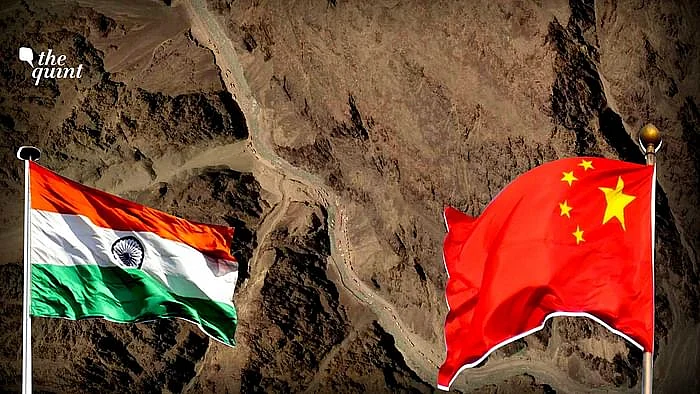Commentators have pounced on just one point in the joint press release of the sixth round of the Indian and Chinese senior commanders meeting at Moldo, near Chushul, on 21 September. That is, the commitment to “stop sending more troops to the frontline”.
What this essentially says is that both sides are keen to stabilise the situation, but this does not mean that we are anywhere near achieving the status quo ante of April 2020 in eastern Ladakh.
The rest of the statement is what the Americans call ‘motherhood and apple pie’ — in other words, platitudes, such as, there was agreement “to earnestly implement the important consensus reached by the leaders of the two countries, strengthen communications on the ground… avoid taking action that may complicate the situation.”
You can be sure that local commanders can and will act to adopt tactically superior positions – but for the present, both sides have already done what they needed to do.
Is India-China Agreement To Stop Sending More Troops A Good Sign?
India & China want things to stabilise, but we aren’t close to achieving status quo ante of April in eastern Ladakh.

Commentators have pounced on just one point in the joint press release of the sixth round of the Indian and Chinese senior commanders meeting at Moldo, near Chushul, on 21 September. That is, the commitment to “stop sending more troops to the frontline”.
What this essentially says is that both sides are keen to stabilise the situation, but this does not mean that we are anywhere near achieving the status quo ante of April 2020 in eastern Ladakh.
The rest of the statement is what the Americans call ‘motherhood and apple pie’ — in other words, platitudes, such as, there was agreement “to earnestly implement the important consensus reached by the leaders of the two countries, strengthen communications on the ground… avoid taking action that may complicate the situation.”
You can be sure that local commanders can and will act to adopt tactically superior positions – but for the present, both sides have already done what they needed to do.
India-China Latest Negotiations & What They Imply
The Chinese negotiating strategy is to wear the other side down by introducing new issues, as soon as old ones are resolved. Currently, we are seeing a variant of this where the Chinese now say that the key issue is the need for India to vacate the dominating heights it occupied on 29/30 August on the south bank of the Pangong Tso. Only after that will they discuss the original issue, which is that of China occupying Finger 4 and adjacent areas on the north bank.
The difference is that, at least according to the Ministry of Defence, the Indian side is occupying heights on its side of the Line of Actual Control (LAC), while the Chinese occupied Finger 4 which was in a grey zone which fell within the claims of both sides, and which was patrolled by them till that point in time.
The negotiations between the two sides went on for more than 13 hours.
The Indian delegation was headed by the commander of 14 (Leh) Corps Lt Gen Harinder Singh, as well as his successor Lt Gen PGK Menon. Accompanying them for the first time was the senior-most external affairs ministry official dealing with China, Naveen Srivastava, who is Joint Secretary (East Asia). The Chinese side was headed by Major General Liu Lin, Commander of the South Xinjiang Military District.
‘Indication’ That The Chinese Have ‘No Plans’ For A Local War?
The two sides also announced an agreement to hold a seventh round of the military-commander type meeting “as soon as possible”. All this sounds nice, but the successive rounds of meetings could well be aimed at showing the world that the Chinese side are being ‘reasonable’ in the face of Indian intransigence. It could be yet another variant of the Chinese negotiating strategy.
Even so, we must welcome the decision of the two sides to stop sending more forces to the frontline. Given the fact that China has just two divisions in the area indicates that the Chinese have no plans for a local war in the area.
India has also put in matching numbers, and if the two sides refrain from a further build-up, it is possible to – at least – ensure that there is some kind of a stabilisation, even though one in which India is, for the present, the loser.
How Doklam Issue Compelled Chinese Leadership To Focus On Sino-Indian Border
In the wake of the Doklam crisis in January 2018, Senior Colonel Zhu Bo, a well-connected People's Liberation Army (PLA) officer, wrote a commentary in the South China Morning Post. Zhu, a familiar sight in international conferences like the Shangri-La Dialogue, warned that India would have to pay a heavy price for its stand in Doklam. “For years, the disputed border has not really been on China’s strategic radar,” he wrote, “in part because of its emphatic victory against India in the 1962 border war, and in part because of China’s major strategic concerns lie elsewhere.”
But, the Doklam issue had compelled the Chinese leadership to focus on the Sino-Indian border.
“As a result, China will most probably enhance infrastructure construction along the border. India may follow suit, but it will in no way be comparable in either speed or scale.”
The words have turned out to be prophetic. In the past three years, the Indian Army has also been reporting a sharp uptick in infrastructure construction, as well as the establishment of newer cantonments closer to the border to station Chinese troops forward, in the manner India does. As for Doklam, the Chinese have established a permanent presence over most of it.
Chinese Military & Air Defence Reinforcements: Why India Should Be ‘Worried’
Last week, the geopolitical intelligence website Stratfor issued a report which said that China’s intensified development of military infrastructure suggests a shift in Beijing’s approach to the Sino-Indian border. The report said that China had more than doubled its total number of air bases, air defence positions and heliports in the last three years.
The one area that the PLA is focusing on is its air defence capabilities in the Tibetan plateau.
It is well-known that the Indian Air Force has an edge in terms of the capabilities of its fighters and their geographic location. Proximate to the LAC they have the ability to ‘pop up’ onto the Tibetan plateau, while Chinese fighters have to pay a weight penalty because of the altitudes their bases are located in. Further, they are easily tracked the moment they take off.
But, the PLA has a formidable integrated air defence system based on surface-to-air missiles already in place in Tibet.
To this it will add a significant component of fighter aircraft. For this purpose, it is now building regular air bases with underground shelters, as well as blast pens on the surface. They are also enhancing their radar cover.
Reports that they may locate two regiments of S-400s in the plateau could be a major challenge for the Indian Air Force (IAF).
What Are The Two Possible Outcomes Of The Sino-India Border Conflict?
Since the mid-2000s, Indian defence planners have been talking up a two-front and even sometimes a two-and-a-half front war scenario.
Suffice to say, with steadily declining defence budgets, we are not even ready for a one-front war.
Now China is confronted with a similar dilemma. M Taylor Fravel has pointed out that for long, the Sino-Indian border constituted a “secondary strategic direction” for China. Its principal interest lay in the direction of Taiwan and the western Pacific. This secondary challenge had to be managed in a way that China always retained the initiative.
After Doklam, Beijing seems to have realised that things have changed, and that India too cannot be managed easily, especially since New Delhi seemed inclined to get involved with the US in the western Pacific as well.
But unlike India, China does not lack resources – and it has been exponentially enhancing the quality of its military in the last decade and more.
In these circumstances, the Sino-Indian situation can end up in two outcomes:
- war – with China seeking to establish its primacy
- a permanent border settlement that will remove the LAC from becoming the PLA’s soft under-belly.
- The Quint September 23, 2020
- https://www.thequint.com/voices/opinion/india-china-border-conflict-senior-commanders-meeting-latest-agreement?#read-more






